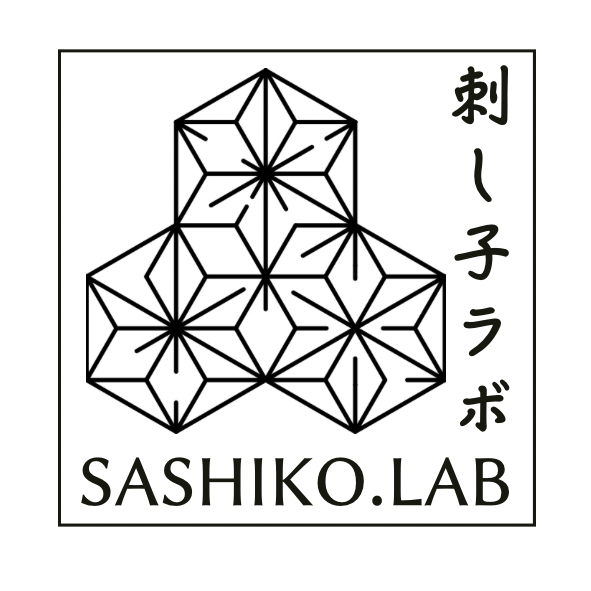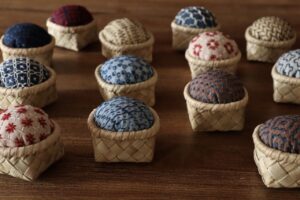Gion matsuri 2022
The parade of yamahoko floats was held in Kyoto’s Gion Matsuri Festival for the first time in three years after a suspension due to the COVID-19 pandemic.
The Gion matsuri originally started during the Heian period, in the eighth to 12th centuries, to pray for the end of an epidemic at the time. It basically takes place over the entire month of July, but one of the highlights is the parade of decorated floats around the city.
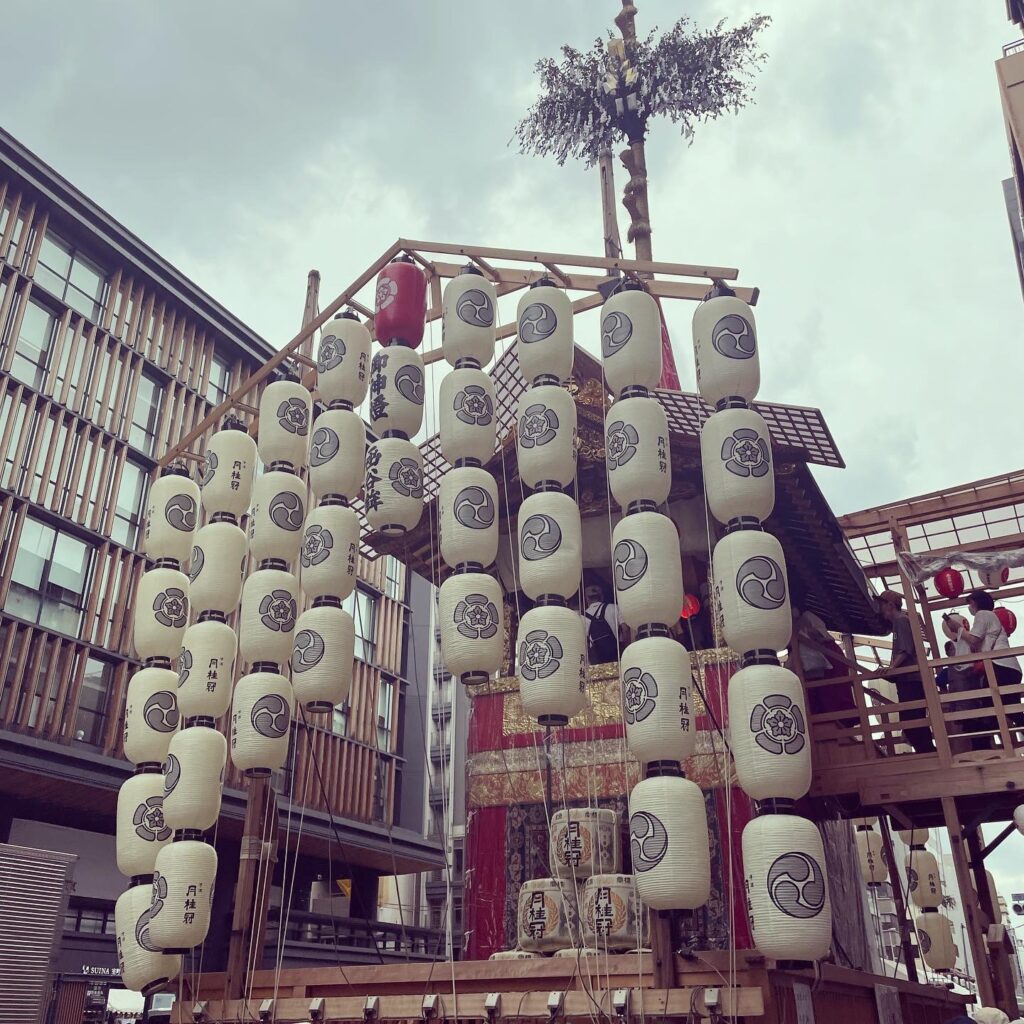
Yahahoko Junko - The parade of the floats -
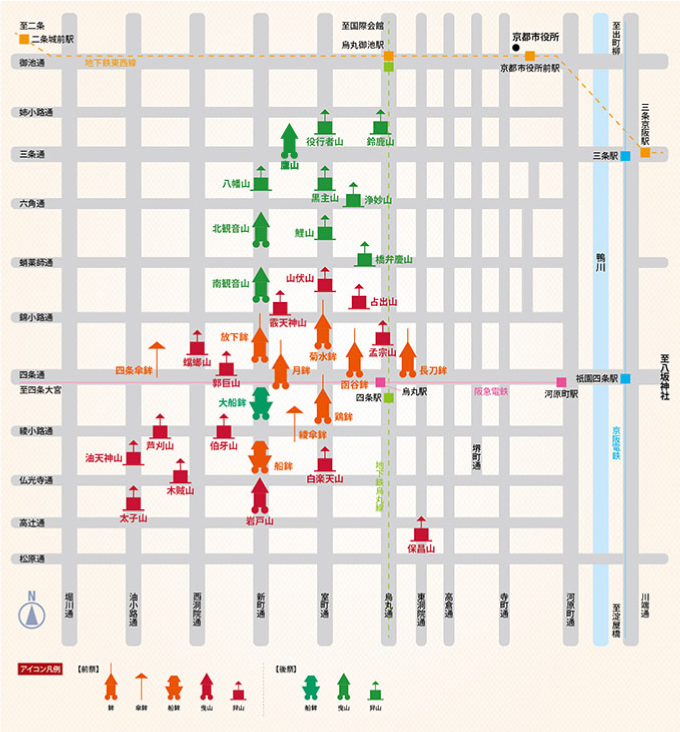
There are 34 yamahoko floats in total and each float has a traditional decorations and history about it. They are built all around the central area as the picture above, but not at the same time. They are divided into two groups, ones for Saki-matusri ( the previous festival ) on July 17th, and the others for Ato-matsuri ( the later festival ) on 24th.
A few days before Saki-matsuri, the orange floats in the map are built and they parade on 17th. Then they are dismantled and the green floats start to be build for Ato-matsuri on 24th. This year, all 34 yamahoko floats will appear including the takayama float, which has been absent due to damage since the Edo period, around 200 years ago.
The revival of Taka-yama
The Taka-yama float has been a participant in the Yamahoko float procession for most of its history since ancient times. The description of this float appears in a document from the 15th century, indicating the long history that it boasts.
Originally, the float was carried on people’s shoulders during the procession. Then, during the Edo period, large wheels were attached to it so that it could be towed. The float was once ravaged by the massive fire in 1788, but was reconstructed with a magnificent large roof at the end of the 18th century. However, at the beginning of the 19th century, it was wrecked once again, this time due to a great storm disaster. Since then, Taka-yama has not been able to participate in the float procession.
To make things worse, almost all of the float parts were destroyed in a fire in 1864. On this occasion, however, the three dolls that had been displayed in Taka-yama over generations escaped damage. Residents of the district housing Taka-yama have since participated in the festival by displaying these dolls at the procession eve called Yoiyama.
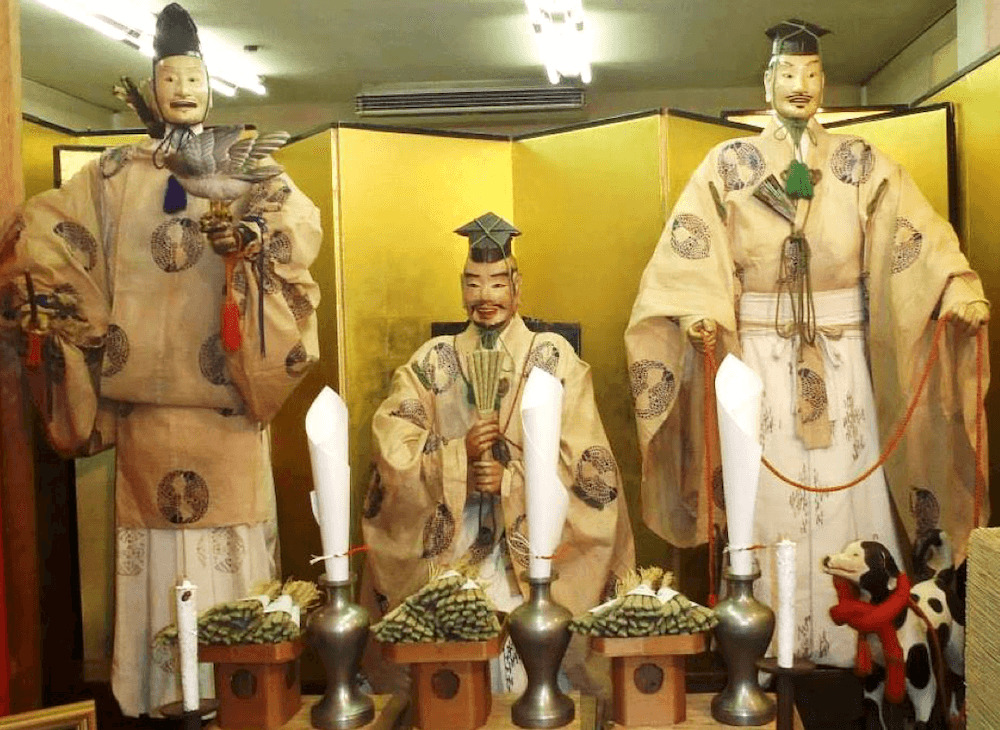
About 10 years ago, people started working for the revival of Takayama, and this year in 2022, Taka-yama has been able to come back to the procession with its fully decorated float for the first time in 196 years.
The smell of the fresh wood
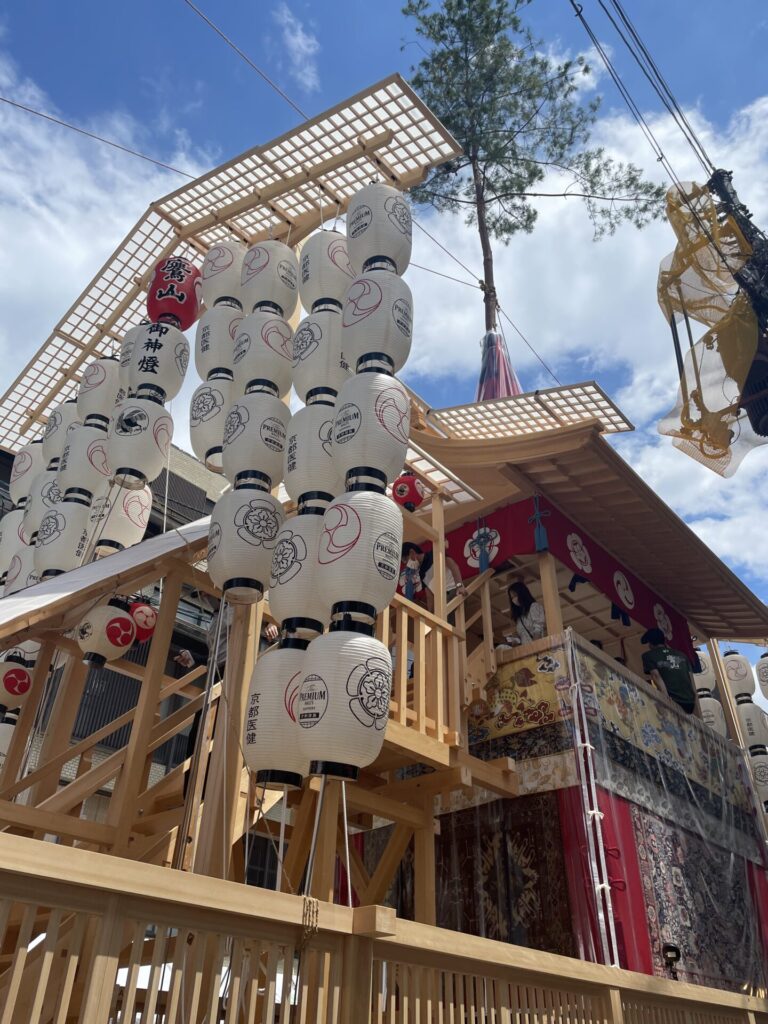
When I passed by the newly built Taka-Yama float today, I sensed the smell of the fresh wood. Since Gion-matsuri is a traditional festival with a long history, it was an extremely rare opportunity to sense the smell of the wood.
One of my favorite things about Gion matsuri is to see the decorations on the floats. It's often referred as a moving museum since each float is decorated with traditional crafts and arts.

Within the 10 minutes' walk to the station, I've spotted 6 different floats on the street and enjoyed watching them. Now they are standing on the street until 24th, and after the parade, they will be dismantled into the small parts and stored until next year. You might think that using the same float parts every year for hundreds of years is impossible, but that's how this festival has been passed on for generations.
Exploring its mysteries
Gion-matsuri takes place for the entire month and there are various events such as prayers to the shrine, assembling Yamahoko without using any nails, the beautiful decorations to see, and the histories behind each Yamahoko float, not only the parade of the floats.
If you would like to know about Gion-Matsuri more, this would be the perfect book. It's a comprehensive book that covers from the origin of the festival to the people or the community who carries on the tradition.
Gion-matsuri Sashiko design
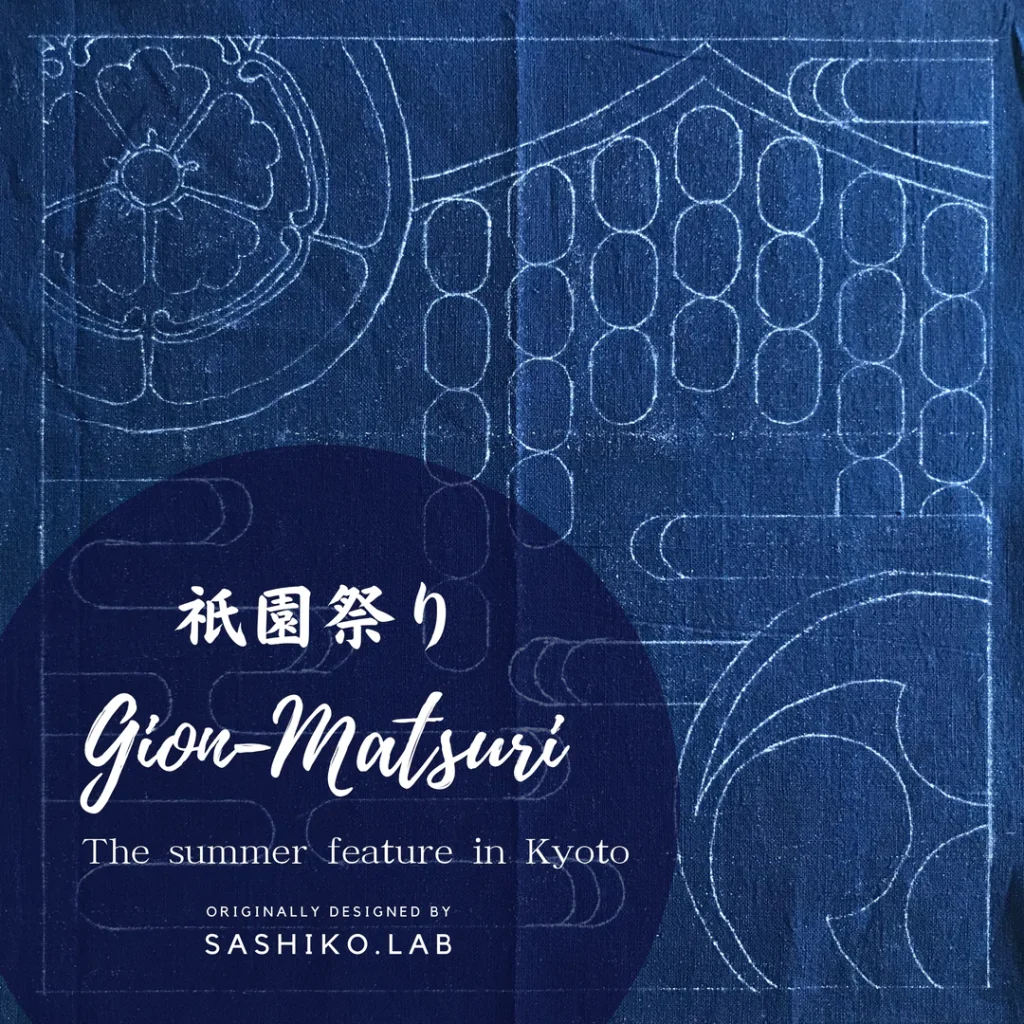
I designed this Gion-matsuri Sashiko design in 2020 when we didn’t have any festivals. You can find two symbol crests of Gion matsuri and the lanterns hanging on the float. Why don't you feel the glimpse of summer in Kyoto by stitching this design? The downloadable pattern is available from here:
